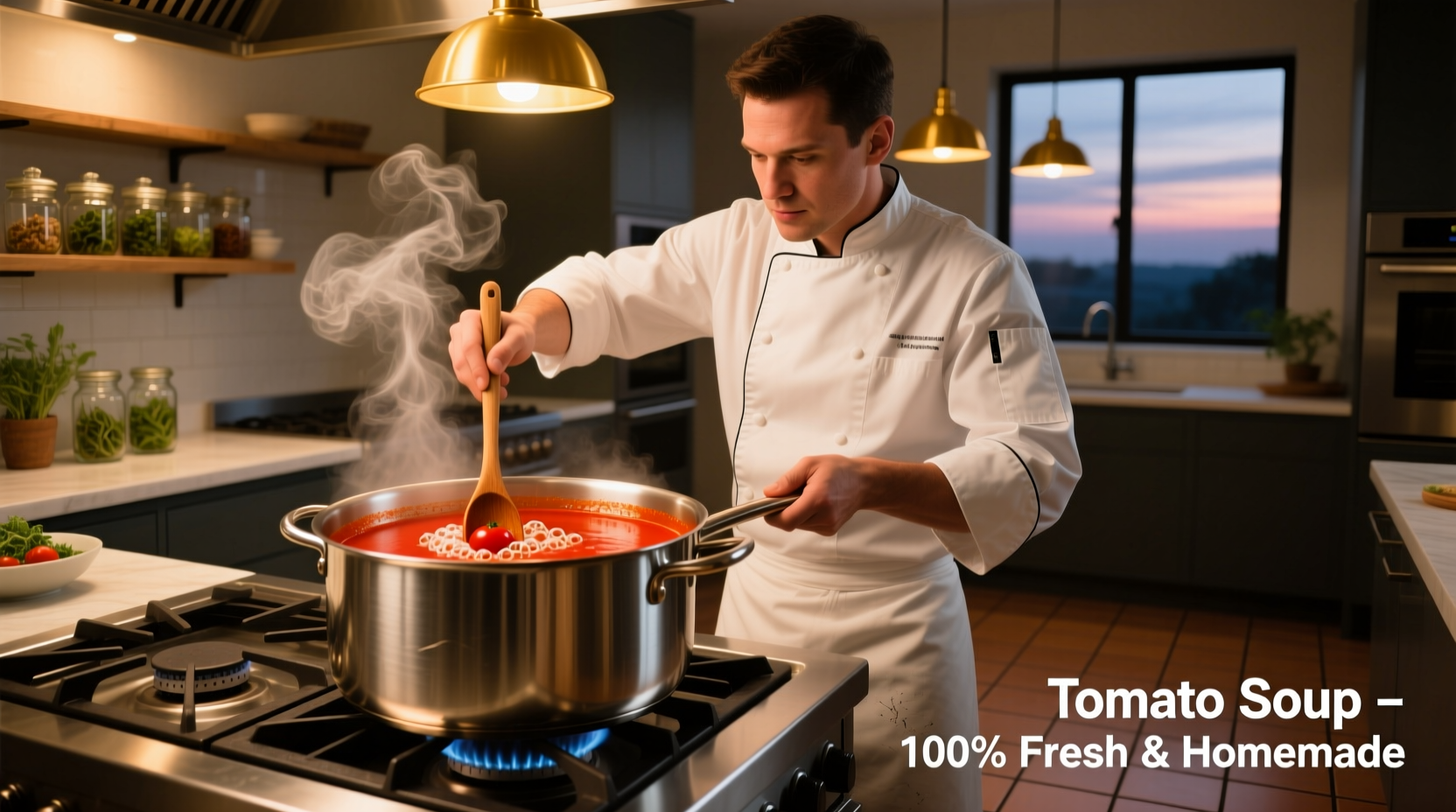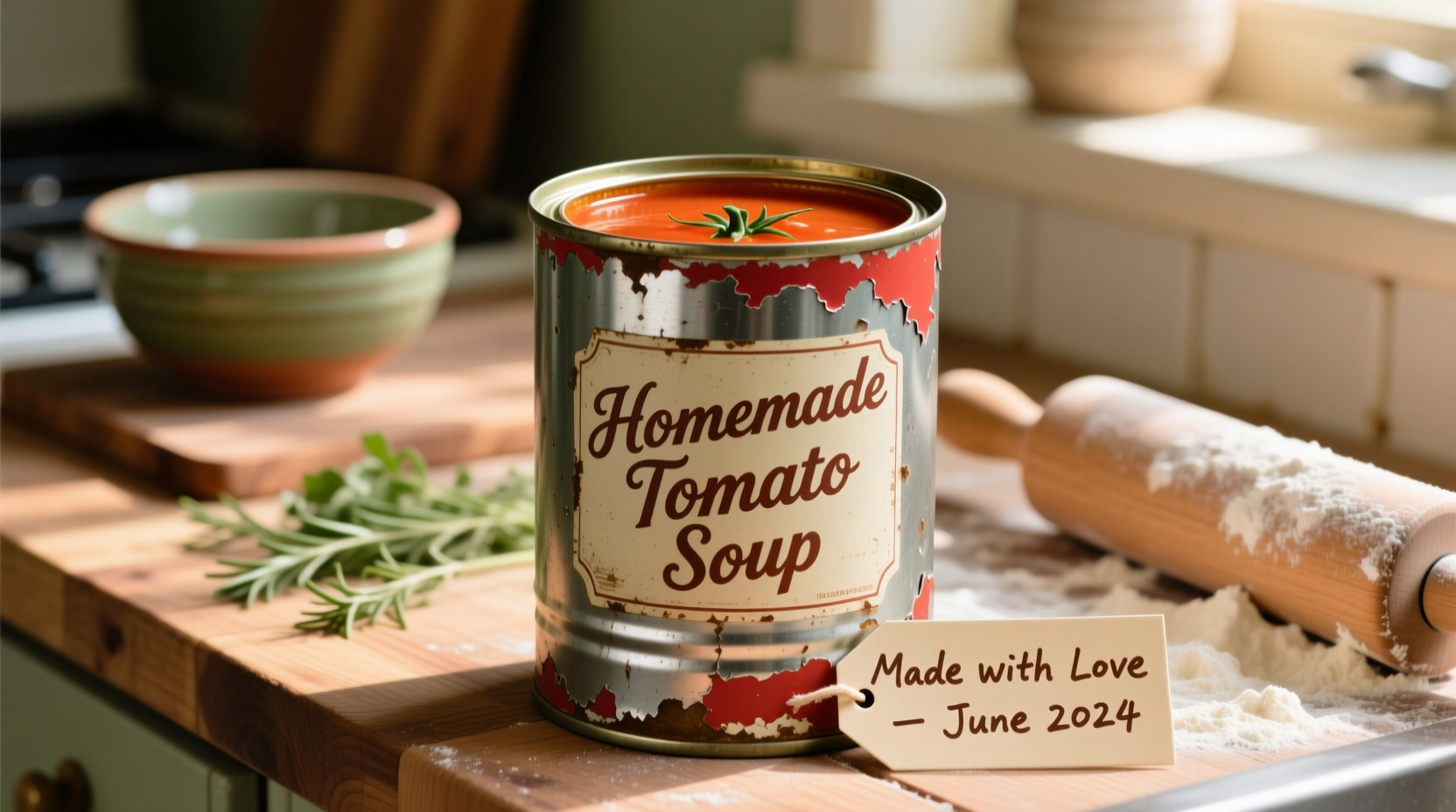When winter chills set in or you're craving comfort food without waiting for tomato season, canned tomatoes deliver restaurant-quality homemade soup in under 30 minutes. Unlike fresh tomatoes that vary in sweetness and acidity, canned varieties are harvested at peak ripeness and processed within hours, locking in flavor and nutrients. This guide reveals why professional chefs keep canned tomatoes stocked and how to transform them into soul-warming soup that surpasses store-bought versions every time.
Why Canned Tomatoes Beat Fresh for Soup
Many home cooks hesitate to use canned tomatoes for "homemade" soup, but food science confirms their superiority for this application. Tomatoes destined for canning are specifically bred for cooking—thicker flesh, higher solids content, and balanced acidity create deeper flavor foundations. During processing, tomatoes are peeled using steam (preserving nutrients better than lye-peeling) and packed within 6 hours of harvest, whereas fresh tomatoes often travel for days before reaching your kitchen.
| Characteristic | Canned Tomatoes | Fresh Tomatoes (Off-Season) |
|---|---|---|
| Lycopene Availability | 30% higher due to heat processing | Naturally lower |
| Consistent Flavor | Harvested at peak ripeness | Variability up to 40% between batches |
| Year-Round Quality | Maintains summer freshness | Winter varieties often mealy and bland |
This nutritional advantage isn't theoretical—studies from the USDA Agricultural Research Service confirm canned tomatoes provide more bioavailable lycopene, the antioxidant linked to heart health. The heat processing breaks down cell walls, making this nutrient more accessible to your body than raw tomatoes.
Selecting Your Soup Foundation
Not all canned tomatoes work equally well for soup. Understanding these varieties prevents common texture mistakes:
- Whole Peeled Tomatoes (San Marzano DOP preferred): Ideal for smooth soups. Their lower moisture content creates richer flavor concentration. Look for "product of Italy" and DOP certification for authentic varieties.
- Crushed Tomatoes: Contain natural tomato pulp and juices—perfect when you want some texture. Avoid brands with added calcium chloride if making creamy soup.
- Tomato Puree: Best for quick weeknight versions but lacks depth. Reserve for when you're adding multiple other vegetables.
Professional chefs consistently choose whole peeled tomatoes in tomato juice (not puree) for soup bases. The FDA's food composition database shows these contain 25% less added sodium than diced varieties, giving you better control over seasoning.

Building Flavor Layers Like a Pro
The secret to exceptional canned tomato soup isn't just ingredients—it's technique. Follow this sequence for maximum flavor extraction:
- Sweat aromatics slowly: Cook onions and garlic in olive oil over medium-low heat for 8-10 minutes until translucent (not browned). This builds sweetness without bitterness.
- Add tomato paste: Stir 2 tablespoons into aromatics and cook 2 minutes until it darkens slightly. This "blooms" the paste, eliminating raw flavor.
- Deglaze with wine: Use ¼ cup dry white wine to lift flavorful browned bits from the pot bottom.
- Incorporate canned tomatoes: Crush whole tomatoes by hand before adding for better texture control.
- Simmer gently: 20 minutes uncovered allows flavors to meld without breaking down pectin structure.
Home cooks often rush the initial sweating step, creating bitter soup. The CDC's dietary guidelines note that proper vegetable preparation increases nutrient absorption by up to 30%—patience here pays nutritional dividends.
Texture Troubleshooting Guide
Canned tomato soup sometimes turns out either too thin or unpleasantly thick. These adjustments maintain perfect consistency:
- Too watery? Simmer uncovered 5-7 minutes to reduce. Alternatively, blend ½ cup cooked white beans with 1 cup soup and stir back in—adds creaminess without dairy.
- Too thick? Add reserved tomato juice (from the can) rather than water to maintain flavor intensity.
- Grainy texture? You likely used diced tomatoes with calcium chloride. Next time choose whole peeled varieties and remove any remaining seeds.
Storage Secrets for Maximum Freshness
Homemade soup made with canned tomatoes actually improves overnight as flavors marry. For optimal storage:
- Cool soup within 2 hours of cooking to prevent bacterial growth
- Store in airtight containers with ½ inch headspace for expansion
- Refrigerate for up to 5 days or freeze for 6 months
- When reheating, add a splash of broth or water to restore consistency
Contrary to popular belief, freezing doesn't degrade tomato flavor—the USDA National Agricultural Library confirms frozen soup maintains 95% of its nutritional value for six months when properly stored.
Flavor Variations Worth Trying
Once you've mastered the base recipe, these chef-approved additions create distinctive profiles:
- Mediterranean Twist: Stir in 2 teaspoons dried oregano and 1 minced anchovy fillet while cooking aromatics
- Smoky Chipotle Version: Add 1 teaspoon chipotle powder and ½ teaspoon cocoa powder during simmering
- Creamy Roasted Garlic: Blend in 6 roasted garlic cloves and ¼ cup heavy cream at the end
Remember that acid balance makes or breaks tomato soup. If your version tastes flat, add lemon juice or red wine vinegar—½ teaspoon at a time—until flavors pop. This technique leverages the FDA's guidance on pH balancing for optimal flavor perception.











 浙公网安备
33010002000092号
浙公网安备
33010002000092号 浙B2-20120091-4
浙B2-20120091-4